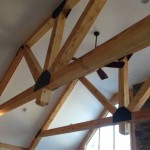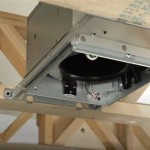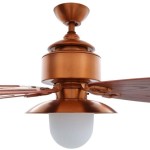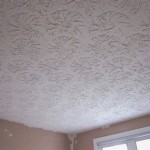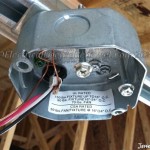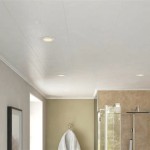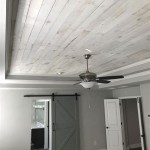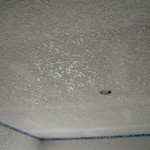Beautifying Your Home With Wood Beams Ceiling Design
Wood beams, historically a structural necessity, have evolved into a sought-after design element, capable of adding character, warmth, and sophistication to any home. Employed strategically, wood beams can transform a mundane ceiling into a captivating architectural feature, enhancing both the aesthetic appeal and the perceived value of a property. This article explores the numerous ways in which wood beams can be used to beautify your home, covering various styles, practical considerations, and design principles.
The incorporation of wood beams into a ceiling design isn't merely a decorative choice; it’s an investment in visual interest. Beams can break up the monotony of a flat, unadorned ceiling, drawing the eye upwards and creating a sense of spaciousness, even in rooms with lower ceilings. The natural texture and inherent variations in wood grain add a layer of tactile appeal that painted drywall simply cannot replicate. Furthermore, wood imparts a sense of organic connection, grounding the interior space and fostering a feeling of comfort and well-being.
Consider the existing architectural style of your home when contemplating wood beam ceiling design. A rustic farmhouse benefits from reclaimed beams with visible imperfections, while a modern loft might call for sleek, meticulously finished beams that complement the minimalist aesthetic. The scale of the room is also crucial; oversized beams can overwhelm a small space, while undersized beams may appear insignificant in a large, open area. Careful planning and thoughtful consideration are essential to achieve a harmonious and visually pleasing result.
Selecting the Right Wood for Your Beams
The type of wood used for your beams significantly impacts the overall look and feel of the space. Different wood species exhibit varying colors, grain patterns, and levels of durability. Popular choices include pine, oak, cedar, and fir, each with its own distinct characteristics.
Pine is a readily available and relatively affordable option, known for its light color and prominent grain. It's a softwood, so it's easier to work with but also more susceptible to dents and scratches. Pine beams are well-suited for rustic or farmhouse-style interiors, where their natural imperfections contribute to the overall charm.
Oak is a hardwood prized for its strength, durability, and distinctive grain patterns. It's available in a range of colors, from light tan to deep brown, and can be stained to match various design schemes. Oak beams are a versatile choice, suitable for both traditional and contemporary settings.
Cedar is known for its rich reddish-brown color, aromatic scent, and natural resistance to insects and decay. It's a popular choice for exposed beams in areas with high humidity, such as bathrooms or kitchens. Cedar beams add a touch of rustic elegance to any space.
Fir is a softwood that offers a balance of affordability, strength, and workability. It's typically light in color with a straight grain pattern and can be easily stained or painted. Fir beams are a good option for modern or transitional interiors, where a clean and understated look is desired.
Beyond the species of wood, consider whether you want solid wood beams or hollow beams. Solid wood beams offer inherent structural integrity and a substantial feel, but they are heavier and more expensive. Hollow beams, typically constructed from wood veneers or composites, provide the aesthetic of solid beams at a fraction of the weight and cost. They are easier to install and can be used in situations where the beams are purely decorative and do not need to bear any load.
Different Beam Styles and Arrangements
The arrangement of wood beams on the ceiling plays a critical role in defining the space's character and visual impact. There are numerous styles and configurations to choose from, each offering a unique aesthetic appeal.
Traditional Beams: These beams are typically spaced evenly across the ceiling, running parallel to each other along the length of the room. They often span the entire width of the room, supported by the walls or other structural elements. This classic arrangement creates a sense of order and symmetry, suitable for both traditional and transitional interiors.
Box Beams: As mentioned earlier, box beams give the appearance of solid timbers but are actually constructed from lighter materials, offering a cost-effective and easier-to-install alternative. They can be arranged in the same manner as traditional beams or used in more creative configurations.
Exposed Rafters: In some architectural styles, the ceiling framing is left exposed, creating a rustic and visually interesting effect. The rafters themselves become the decorative beams, adding a sense of authenticity and architectural detail. This approach is particularly suited for homes with a Scandinavian or farmhouse aesthetic.
Herringbone Pattern: This more elaborate arrangement involves laying the beams in a herringbone pattern, creating a dynamic and eye-catching focal point. This style is best suited for larger rooms with high ceilings, where the intricate pattern can be fully appreciated. It's a bold choice that adds a touch of sophistication and visual flair.
Vaulted Ceilings with Beams: Vaulted ceilings provide a natural opportunity to incorporate wood beams, enhancing the sense of height and spaciousness. The beams can be arranged to follow the contours of the vault, accentuating its shape and creating a dramatic architectural feature. This combination is particularly effective in living rooms and dining rooms.
Accent Beams: Not all beam installations require covering the entire ceiling. A single beam or a small grouping of beams can be used to highlight a specific area, such as a fireplace, a dining table, or a kitchen island. This approach allows you to add a touch of rustic charm without overwhelming the space.
Practical Considerations for Installation and Maintenance
Installing wood beams, whether solid or hollow, requires careful planning and execution. It's essential to consider the structural integrity of the ceiling and ensure that the beams are properly supported. Hiring a qualified contractor is highly recommended, especially for solid wood beams, which can be quite heavy and require specialized equipment for lifting and installation.
Before installation, the beams should be properly finished with a sealant or varnish to protect them from moisture and insect damage. The finish should be chosen to complement the overall design scheme and the wood species. Regular cleaning and maintenance are essential to keep the beams looking their best.
Dusting the beams regularly with a soft cloth or brush will prevent the buildup of dirt and grime. For tougher stains, a mild soap and water solution can be used. Avoid using harsh chemicals or abrasive cleaners, as these can damage the finish of the wood.
If the beams are located in an area with high humidity, it's important to monitor them for signs of moisture damage, such as warping or mildew. A dehumidifier can help to control the humidity levels and prevent these issues. Regular inspection and maintenance will ensure that your wood beams remain a beautiful and enduring feature of your home for years to come.
Lighting is another crucial factor to consider when designing a wood beam ceiling. Recessed lighting fixtures can be integrated into the ceiling to provide general illumination, while spotlights can be used to highlight the beams themselves. Pendant lights or chandeliers can be suspended from the beams to create a dramatic focal point and add a touch of elegance to the space. Careful planning of the lighting design will enhance the beauty of the beams and create a warm and inviting ambiance.
In conclusion, incorporating wood beams into your ceiling design is a transformative decision that can elevate the aesthetic appeal and overall value of your home. By carefully considering the wood species, beam style, arrangement, and practical considerations, you can create a stunning and unique space that reflects your personal style and enhances the beauty of your home.

How To Add Reclaimed Ceiling Beams A New Home

Wood Beam Ceiling Ideas With A Touch Of Rustic Charm Architectural Digest

Wood Beam Ceiling Ideas With A Touch Of Rustic Charm Architectural Digest
Interior Decorating That Combines Both Rustic And Modern Exposed Beams

Eclectic House Tour Colorful Decor

Beamed Ceiling Ideas 11 Designs That Celebrate Beautiful Beams

9 Spaces Where Wooden Ceiling Beams Make A Statement
:max_bytes(150000):strip_icc()/328876915_3483068721912822_7533288323520714674_n-ec0a53669b42476da69f4892d8350798.jpg?strip=all)
20 Wood Ceiling Ideas We Love For Any Room

Love This Look Exposed Wood Ceiling Beams The Inspired Room

Inspired By Wood Beam Plank Ceiling Design The Room
Related Posts

